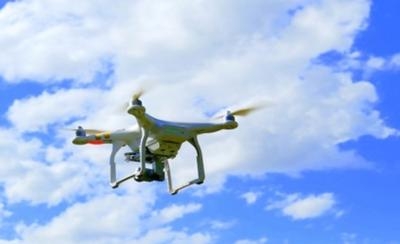Showing General Support For The Proposals Included In The Report
The report issued by the FAA's Unmanned Aircraft Systems Identification and Tracking Aviation Rulemaking Committee (ARC) released Tuesday is drawing support from drone manufacturers and other sectors of the aviation industry.

The Drone Manufacturers Alliance, which represents the makers of most civilian drones, released a statement saying it is "pleased" with the recommendation that authorities identify and track airborne drones by receiving local signals from them.
“The Drone Manufacturers Alliance believes law enforcement, national security and aviation safety authorities need a simple and reliable way to monitor airborne drones. We appreciate how the ARC’s careful work has shown that direct broadcast technologies are the most efficient way to transmit, receive and analyze drone identification information,” said Kara Calvert, Director of the Drone Manufacturers Alliance. “We urge the FAA to use this report to implement technologies that will pose a minimal burden upon drone users and manufacturers, which will encourage compliance, and keep the skies safe for drones, traditional aviation and the general public.”

The ARC report recommended that most drones in popular use today should provide their identification and flight tracking information to authorities by directly broadcasting that data to localized receivers. This system would function like an automobile license plate, providing a basic identification code that authorities can use to learn more about a drone’s operation. Some drones would be allowed to use a networked system as an optional alternative, if an internet connection is available.
The Drone Manufacturers Alliance encourages regulatory authorities to note the ARC report’s conclusion that several promising drone tracking and monitoring technologies can be implemented without adding additional equipment to drones. Integrated solutions using existing drone equipment will encourage the use of drones for beneficial purposes, whereas new equipment requirements would add cost and engineering complexity to drones as well as impose new burdens and costs upon the people who use them.
Manufacturer DJI also issued a statement supporting the recommendations of the ARC. “DJI supports many of the conclusions in the ARC report, understanding that its limited purpose was to describe the needs of security and law enforcement agencies and to recommend the technologies that could meet those needs,” said Brendan Schulman, DJI Vice President for Policy and Legal Affairs, who represented DJI on the ARC. “There is still an important discussion to come about how to balance governmental needs and desires with the burdens, costs, and privacy invasions that could be faced by drone pilots depending on the actual technologies chosen and how they are implemented. Drone pilots and operators were not well-represented in terms of the number of ARC members, and we feel their interests will be expressed in the future rulemaking process that lies ahead.”

From the manned aircraft side of the equation, ALPA said that it also supports the recommendations of the ARC, and encourages the FAA to implement mandatory identification and tracking capabilities as quickly as possible.
“As a member of this diverse group of participants, ALPA worked with the ARC, manned aviation organizations, and both federal and state law enforcement stakeholders to draft a regulatory framework that, when implemented, increases safety and addresses security concerns. By requiring UAS operators to equip their devices with identification and tracking systems, law enforcement officials gain the ability to identify and track down a UAS pilot who may be involved in a collision or is jeopardizing the safety of our national air space or the general public.
“Earlier this year, a collision between an army helicopter and a drone highlighted the importance of implementing this technology. In that event, pieces of the drone were used to identify the registered owner through the drone’s manufacturer. While fortunate in that instance, we cannot rely on good fortune in the future. Identification and tracking technologies are needed urgently. With the rapidly growing use of UAS, it is more important than ever that we remain focused on safety as the highest priority.”
(Source: News releases. Image from file)
 ANN's Daily Aero-Linx (04.13.24)
ANN's Daily Aero-Linx (04.13.24) ANN's Daily Aero-Term (04.13.24): Beyond Visual Line Of Sight (BVLOS)
ANN's Daily Aero-Term (04.13.24): Beyond Visual Line Of Sight (BVLOS) Airborne 04.09.24: SnF24!, Piper-DeltaHawk!, Fisher Update, Junkers
Airborne 04.09.24: SnF24!, Piper-DeltaHawk!, Fisher Update, Junkers Aero-News: Quote of the Day (04.14.24)
Aero-News: Quote of the Day (04.14.24) ANN's Daily Aero-Term (04.14.24): Maximum Authorized Altitude
ANN's Daily Aero-Term (04.14.24): Maximum Authorized Altitude





